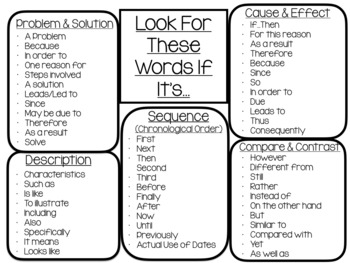 It's not that the idea of explicitly teaching text structures is new to me; it's that I've never considered 1) how significant they are to students' deep comprehension of a text and 2) the possibility that a single text could contain one or more of those structures. Therefore, teaching text structures not only impacts the students' understanding of the overall meaning of a text but also its individual parts.
It's not that the idea of explicitly teaching text structures is new to me; it's that I've never considered 1) how significant they are to students' deep comprehension of a text and 2) the possibility that a single text could contain one or more of those structures. Therefore, teaching text structures not only impacts the students' understanding of the overall meaning of a text but also its individual parts.Last year, I decided to put a bigger emphasis on determining text structure, but once that was determined, I moved on. I never considered looking for examples of "mini" text structures within the body of the text. Like a detective with a magnifying glass searching for clues such as keywords and phrases that indicated text structure, my students and I were on the hunt. At the end of our close reading excursion, my students were all tuckered out. Along the way, they collected souvenirs in the form of signal words.

Yes. It's hard work, but the understanding they gained was definitely worth the investment of time and energy! In Part 2, I will venture even deeper down this rabbit hole. I hope you'll join me.
Still Learning,
Lola Jollie



No comments:
Post a Comment